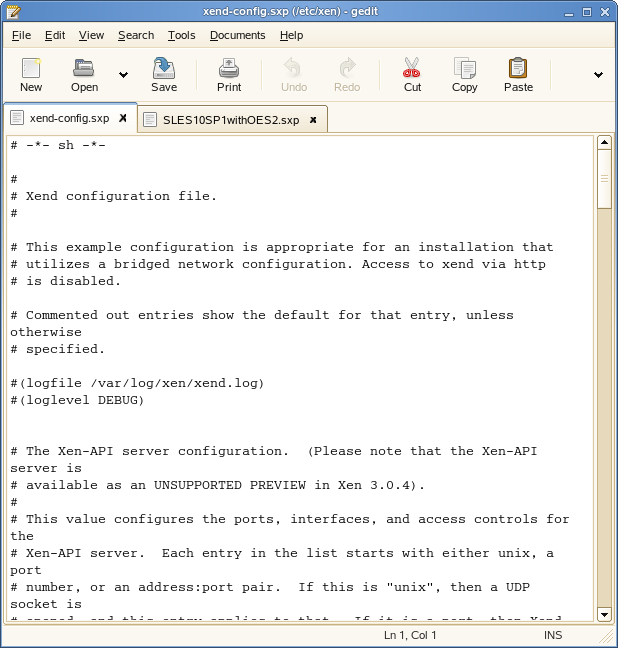1.2 xend
The xend daemon is a key component of Xen virtualization. It performs management functions and stores settings that relate to the host environment and each virtual machine. You can customize xend to meet your specific configuration requirements.
-
To specify xend operating parameters, edit the /etc/xen/xend-config.sxp file. The settings take effect the next time xend starts.
Figure 1-2 Editing the xend-config.sxp File

-
To start the xend daemon, enter service xend start.
-
To stop the xend daemon, enter service xend stop.
-
To restart the xend daemon, enter service xend restart.
-
To check the status of the xend daemon, enter service xend status.
1.2.1 xend Parameters
The parameters in the xend-config.sxp file can be customized to meet your requirements for virtualization. The following table lists some of the parameters.
Table 1-2 xend-config.sxp Parameters